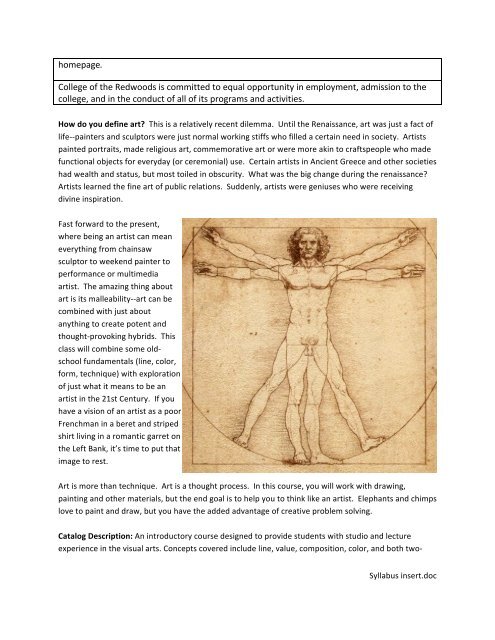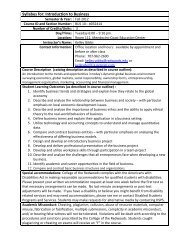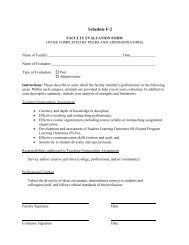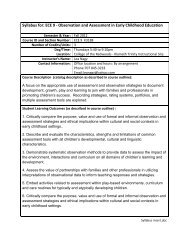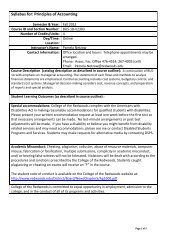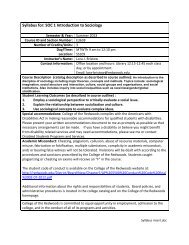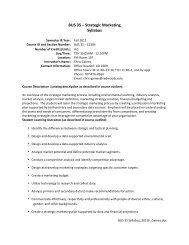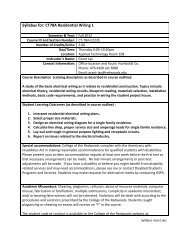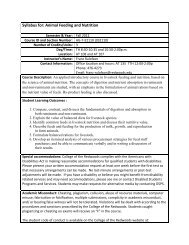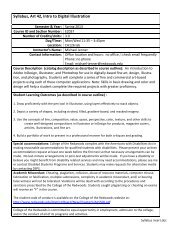Syllabus for: Intro to Art - College of the Redwoods
Syllabus for: Intro to Art - College of the Redwoods
Syllabus for: Intro to Art - College of the Redwoods
Create successful ePaper yourself
Turn your PDF publications into a flip-book with our unique Google optimized e-Paper software.
homepage. <br />
<strong>College</strong> <strong>of</strong> <strong>the</strong> <strong>Redwoods</strong> is committed <strong>to</strong> equal opportunity in employment, admission <strong>to</strong> <strong>the</strong> <br />
college, and in <strong>the</strong> conduct <strong>of</strong> all <strong>of</strong> its programs and activities. <br />
How do you define art This is a relatively recent dilemma. Until <strong>the</strong> Renaissance, art was just a fact <strong>of</strong> <br />
life-‐-‐painters and sculp<strong>to</strong>rs were just normal working stiffs who filled a certain need in society. <strong>Art</strong>ists <br />
painted portraits, made religious art, commemorative art or were more akin <strong>to</strong> craftspeople who made <br />
functional objects <strong>for</strong> everyday (or ceremonial) use. Certain artists in Ancient Greece and o<strong>the</strong>r societies <br />
had wealth and status, but most <strong>to</strong>iled in obscurity. What was <strong>the</strong> big change during <strong>the</strong> renaissance <br />
<strong>Art</strong>ists learned <strong>the</strong> fine art <strong>of</strong> public relations. Suddenly, artists were geniuses who were receiving <br />
divine inspiration. <br />
Fast <strong>for</strong>ward <strong>to</strong> <strong>the</strong> present, <br />
where being an artist can mean <br />
everything from chainsaw <br />
sculp<strong>to</strong>r <strong>to</strong> weekend painter <strong>to</strong> <br />
per<strong>for</strong>mance or multimedia <br />
artist. The amazing thing about <br />
art is its malleability-‐-‐art can be <br />
combined with just about <br />
anything <strong>to</strong> create potent and <br />
thought-‐provoking hybrids. This <br />
class will combine some old-school<br />
fundamentals (line, color, <br />
<strong>for</strong>m, technique) with exploration <br />
<strong>of</strong> just what it means <strong>to</strong> be an <br />
artist in <strong>the</strong> 21st Century. If you <br />
have a vision <strong>of</strong> an artist as a poor <br />
Frenchman in a beret and striped <br />
shirt living in a romantic garret on <br />
<strong>the</strong> Left Bank, it’s time <strong>to</strong> put that <br />
image <strong>to</strong> rest. <br />
<strong>Art</strong> is more than technique. <strong>Art</strong> is a thought process. In this course, you will work with drawing, <br />
painting and o<strong>the</strong>r materials, but <strong>the</strong> end goal is <strong>to</strong> help you <strong>to</strong> think like an artist. Elephants and chimps <br />
love <strong>to</strong> paint and draw, but you have <strong>the</strong> added advantage <strong>of</strong> creative problem solving. <br />
Catalog Description: An introduc<strong>to</strong>ry course designed <strong>to</strong> provide students with studio and lecture <br />
experience in <strong>the</strong> visual arts. Concepts covered include line, value, composition, color, and both two-‐ <br />
<strong>Syllabus</strong> insert.doc


